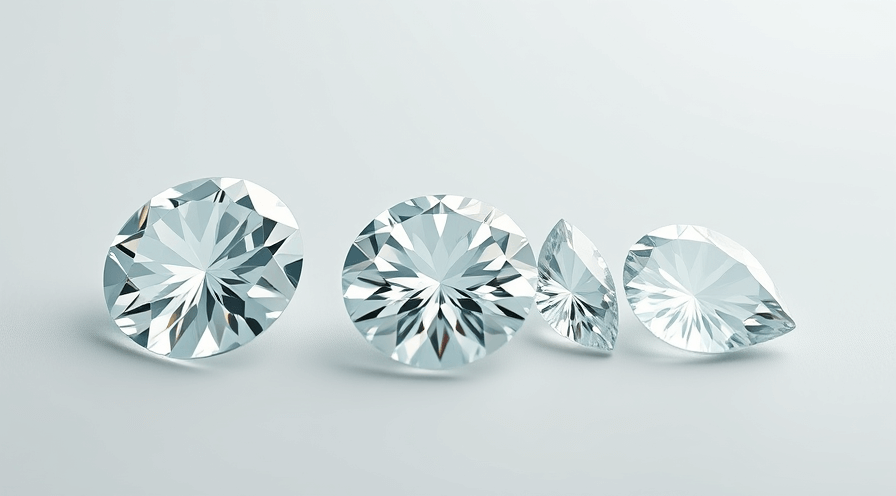Best Diamond Shapes for Maximizing Carat Size on a Budget
When working within a budget yet aiming to maximize the carat size of a diamond, the shape of the stone plays a crucial role. Different diamond shapes can visually enhance carat weight, allowing buyers to get a more impressive presence without overspending. Selecting the right shape ensures not only the best eye-catching appearance but also the most efficient value for the budget.
Why Diamond Shape Influences Perceived Size
Diamond shapes vary significantly in how they display carat weight and size. The carat measure refers to the diamond’s weight, but the visual impression of size relies heavily on the stone's cut and shape. For instance, certain elongated shapes spread the carat weight over a larger surface area, which makes the diamond appear bigger when viewed from above. This can be advantageous when trying to maximize carat size visually without the accompanying jump in price.
Beyond appearance, consumers must also consider how the cut quality affects brilliance and sparkle. A well-cut diamond of any shape can appear more lively and attractive, while a poorly cut diamond might look dull regardless of carat size.
Top Diamond Shapes to Maximize Carat Size on a Budget
Some diamond shapes inherently offer a larger table surface area relative to their carat weight, effectively giving the illusion of a larger stone. Below are the most popular shapes recommended for those seeking to maximize carat size within a limited budget.
1. Oval Cut
The oval cut diamond is widely favored for its elongated shape, which distributes carat weight across a larger surface area, making it appear bigger than round stones of the same carat. In addition to maximizing visible size, the oval cut offers brilliant sparkle comparable to the round cut, which is the traditional standard for brilliance.
Shoppers often choose oval cuts to achieve a larger-looking diamond without the premium price typically associated with round brilliant cuts. Its versatility allows it to work well in many types of settings, especially solitaires or halo designs that emphasize size.
2. Marquise Cut
Distinguished by its boat-like shape with pointed ends, the marquise cut enhances the diamond's carat size visually by elongating the finger when worn. Due to its length-to-width ratio, the marquise cut spreads a given carat weight over a larger surface area than a round diamond.
Marquise diamonds are ideal for those who want a bold statement stone that looks larger without increasing cost significantly. However, care must be taken to choose a well-proportioned cut to avoid a “bow-tie” effect — a shadow across the center that may detract from appearance.
3. Pear Shape
The pear shape combines round and marquise cuts, resulting in an asymmetrical teardrop form. This shape makes efficient use of carat weight by stretching the diamond lengthwise. Pear-shaped diamonds generally have a larger surface area per carat compared to a round cut, making them excellent for budget-conscious shoppers wanting maximum size impact.
Its unique shape offers elegant versatility for rings, earrings, and pendants. Buyers should also pay attention to cut quality to maintain brilliance and avoid dark areas.
4. Cushion Cut
Cushion cut diamonds feature rounded corners and larger facets, which can increase their visual size and sparkle. Although cushion cuts tend to have slightly less surface area than elongating shapes like oval or marquise, their vintage charm and fiery brilliance provide excellent value at a lower price point.
This cut is often a wise choice for those looking for a balance between carat size, price, and traditional appearance. It also tends to have a lower price per carat than round and some fancy shapes, making it a budget-friendly option.
Additional Tips to Maximize Carat Size Value
Choosing the diamond shape is just one element of maximizing carat size on a budget. Additional factors include:
- Consider Shallow Cuts: Diamonds cut slightly shallower retain more weight and thus carry more carats, increasing size appearance. However, extreme shallowness can reduce brilliance, so a balanced cut is key.
- Opt for Lower Color and Clarity Grades: Less expensive diamonds with slightly lower color (such as H or I) and clarity (SI1 or SI2) grades often look visually clean but cost less, allowing for a larger carat purchase.
- Choose Fancy Shapes Over Rounds: Round brilliant cuts are typically the most expensive per carat. Choosing fancy shapes such as oval, marquise, or pear can increase size perception at a similar price.
- Use Halo Settings: Surrounding the center stone with smaller diamonds can amplify the overall look and create the illusion of a larger center diamond without increasing carat weight significantly.
Examples of Size and Cost Comparison
For context, a 1-carat round brilliant diamond at a good cut and VS clarity grade might cost around $6,000-$7,000, depending on color. An oval cut diamond with similar specs could be priced approximately 10-20% less, yet appear visibly larger due to its spread. Likewise, a 1.2-carat marquise or pear shape diamond might fit the same budget but provide more surface area and visual presence.
This demonstrates how thoughtful choice of shape and specifications can significantly increase the perceived size within budget constraints.
Final Thoughts: Making the Best Choice for Value and Appearance
Maximizing carat size on a budget involves strategic selection of diamond shape alongside consideration of cut, color, clarity, and setting options. Shapes like oval, marquise, pear, and cushion stand out as excellent choices for buyers wishing to get the largest visual impact at a sensible price.
By balancing these factors, consumers can secure a diamond that appears larger and sparkles beautifully without exceeding their financial limits. Potential buyers are encouraged to explore different shapes and consult with reputable jewelers to find the best deal and the diamond that meets their aesthetic and budgetary needs.
For those ready to begin their search or upgrade an existing collection, understanding how diamond shapes influence size perception is a critical step toward making an informed, confident purchase.
